Iceland, a Nordic island nation, is a world of striking contrasts and intriguing history. It sits uniquely on the geologic frontier between North America and Europe, making it a place of varied landscapes and active geological features.
The country is characterized by its sparkling glaciers, such as Vatna Glacier, the largest in Europe, which lie across rugged mountains. Additionally, Iceland is known for its hot geysers that not only shape its terrain but also provide geothermal energy for heating.
Founded over a thousand years ago during the Viking Age, Iceland was settled by Norse and Celtic populations. Reykjavík, the capital and largest city, represents the urban aspect of Iceland.
Nature and adventure are at the heart of Icelandic tourism. The country’s landscape of waterfalls, geysers, volcanoes, and glaciers offers a wealth of natural beauty.
Activities like bathing in the Blue Lagoon, experiencing the Northern Lights, and exploring locations like the Vatnajökull Glacier make Iceland an ideal destination for those seeking immersion in pristine nature and Viking history.
Best Times to Visit Iceland for Smaller Crowds

Iceland during autumn season
If you’re dreaming of exploring Iceland’s stunning landscapes without the buzz of heavy tourist crowds, there are specific times you should consider. The least crowded periods in Iceland are during its off-seasons: September to November and January to May.
These months offer a tranquil escape with fewer tourists and shorter wait times for attractions. You’ll experience the authentic charm of Iceland more intimately during these quieter times.
Whether it’s the serene beauty of fall or the brisk allure of late winter, each season presents a unique, crowd-free way to discover the Icelandic wonders.
Best Times to Visit Iceland for Good Weather
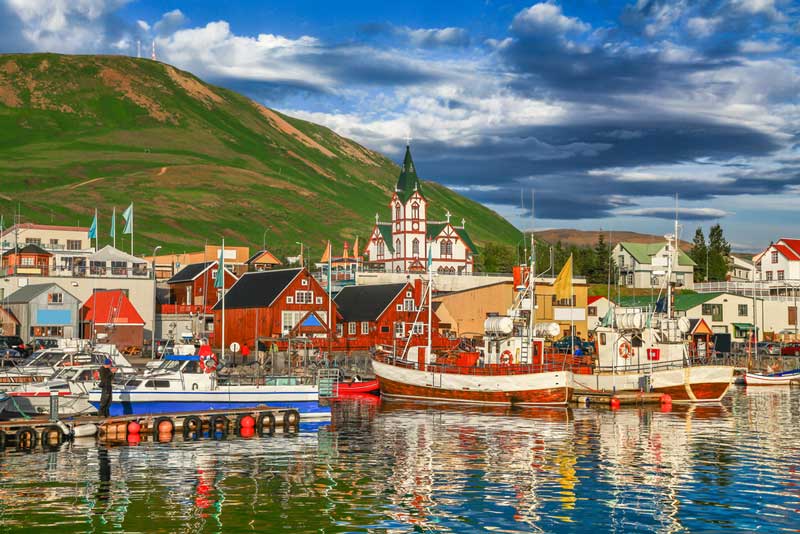
Beautiful summer view of the historic town of Husavik
For the best weather in Iceland, aim for the summer months, from June to August. This is when you’ll find Iceland at its warmest and brightest. Long days under the Midnight Sun give you ample time to explore.
Picture yourself wandering under a sky that never fully darkens, surrounded by vibrant landscapes. Summer in Iceland isn’t just about the sun; it’s a time when the whole country comes alive. Nature blooms, and the outdoor activities are endless, from hiking through green valleys to whale watching under the extended daylight.
However, if you prefer milder temperatures and fewer crowds, late spring and early fall are also great options. May and September offer a more tranquil experience with the added bonus of slightly cooler yet still comfortable weather.
Best Times to Visit Iceland for Lower Price
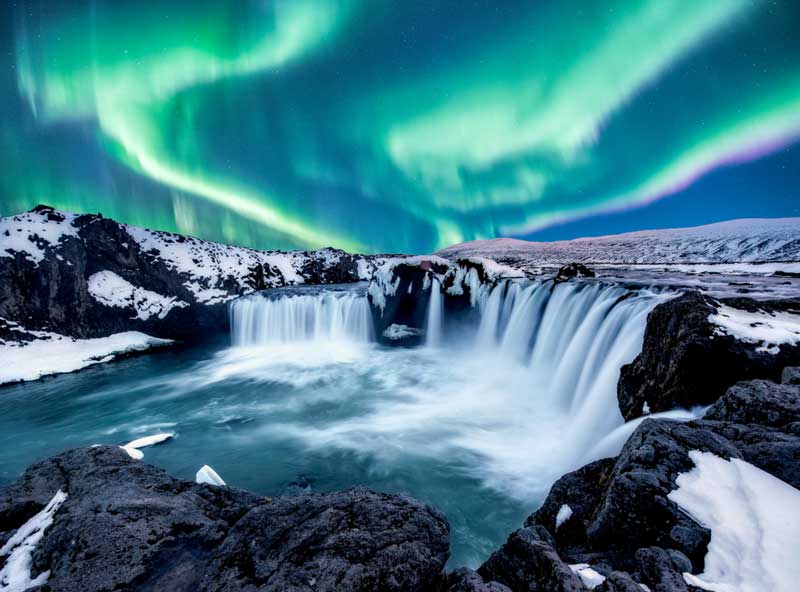
The Godafoss waterfall in Iceland
If you’re looking to explore Iceland on a budget, timing is key. The most affordable times to visit are during Iceland’s off-seasons, which span from September to November and then from January to May.
During these months, you’ll find that airfare and accommodation prices drop significantly. This means you can enjoy the stunning beauty of Iceland without the high costs usually associated with peak travel seasons.
Imagine walking along the black sand beaches or watching the Northern Lights dance across the sky, all while keeping your wallet happy. Not only do these off-peak times offer better deals, but they also bring fewer crowds. This allows for a more intimate and authentic Icelandic experience.
Best Time to Visit Iceland for the Northern Lights
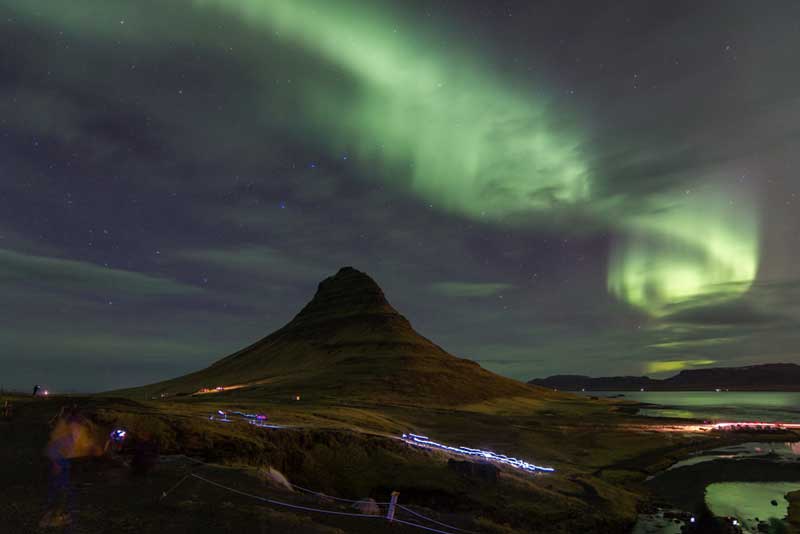
Northern Lights in Kirkjufell Mountain in Iceland
To witness the magical Northern Lights in Iceland, the best time is during the darker months, from September to April. This period offers long, dark nights, which are essential for observing the auroras in their full glory. Imagine the thrill of seeing the sky dance in vibrant hues of green and pink, a truly unforgettable sight.
September and March are particularly appealing, as these months combine the necessary darkness with relatively milder weather. This makes for more comfortable aurora hunting. The nights are crisp, and the chances of clear skies are higher, providing an ideal backdrop for the Northern Lights.
Visiting during these months not only maximizes your chances of seeing this natural wonder, but also allows you to experience Iceland’s other seasonal highlights, like its stark winter landscapes or the onset of spring.
Best Time to Visit Iceland for Whale Watching
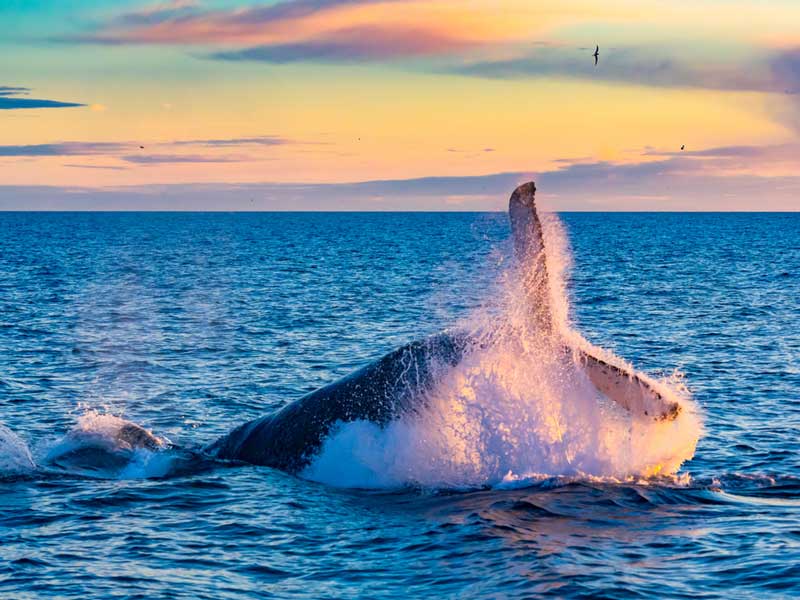
whale watching in Iceland
The prime time for whale watching in Iceland is during the summer, specifically from June to August. These months offer the best chances to spot a variety of whale species in their natural habitat.
The warm summer waters attract these magnificent creatures, ranging from humpbacks and orcas to minke whales. Imagine sailing in the bright, extended daylight of Icelandic summer, with stunning ocean views and the excitement of spotting whales breaching the surface.
Additionally, orca and dolphin sightings are more common in the winter, especially from February to March, in places like Breidafjordur Bay. Though winter whale watching can be chillier, it’s less crowded and equally rewarding.
Best Time to Visit Iceland’s Hot Springs
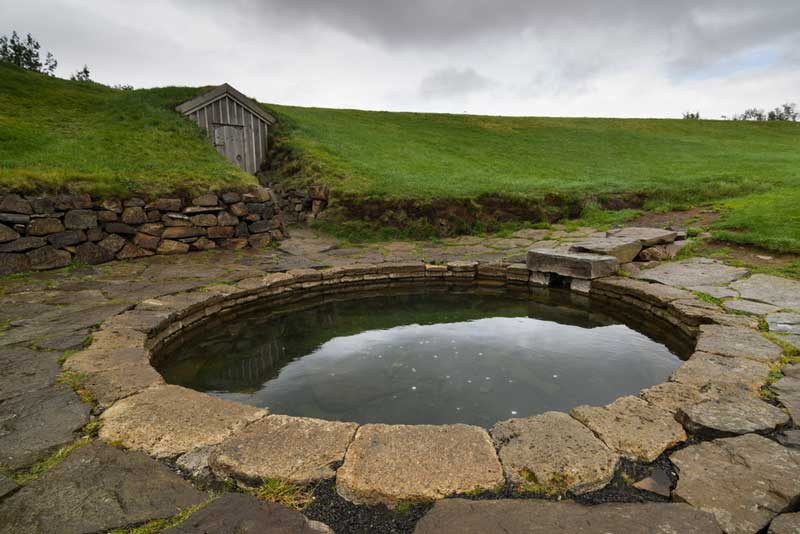
Snorri’s pool, Reykholt
Iceland’s hot springs are a year-round attraction, each season offering its own unique experience. In the summer, from June to August, the milder weather and extended daylight hours provide a perfect setting for a relaxing soak in the geothermal waters.
Imagine unwinding in a warm spring under the midnight sun, surrounded by Iceland’s lush summer landscapes.
However, many find the contrast of the chilly winter air with the hot springs’ warm waters particularly enchanting. Winter, especially from September to March, also presents the magical opportunity to possibly view the Northern Lights while soaking in a hot spring.
Though access to some remote hot springs can be challenging during winter due to harsh conditions, the experience of bathing in a warm pool amidst a snowy landscape is unparalleled.
No matter when you visit, the hot springs in Iceland offer a tranquil and rejuvenating experience, harmoniously blending with the country’s natural beauty.
Worst Time to Visit Iceland
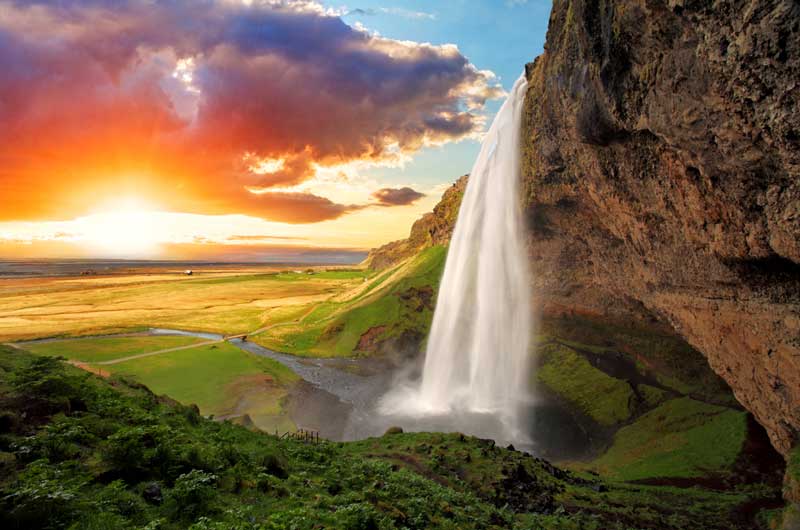
Waterfall, Iceland – Seljalandsfoss
While there’s no truly “bad” time to visit Iceland, if you’re looking to avoid certain drawbacks, the peak summer months, particularly July and August, might be less ideal for some travelers.
During these months, Iceland experiences its warmest weather, but this also attracts the largest crowds of tourists. The influx of visitors can lead to crowded attractions, higher prices for accommodations and rentals, and generally a less peaceful experience of the country’s natural wonders.
Additionally, if the Northern Lights are a key reason for your visit, summer is not the time to go. The nearly constant daylight during these months makes it impossible to see the auroras.
For those seeking a quieter, more budget-friendly trip, or wishing to witness the mesmerizing Northern Lights, considering the shoulder or off-peak seasons could be more rewarding.
Final Thoughts
Choosing the best time to visit Iceland really depends on what you’re seeking from your adventure. Summer, from June to August, is perfect for warm weather and endless daylight, ideal for exploring the island’s breathtaking landscapes.
For those eager to see the Northern Lights, the darker months from September to April are your best bet. Budget travelers will find off-peak seasons, particularly September to November and January to May, more wallet-friendly and less crowded.
Whale watching peaks in summer, but winter offers unique sightings too. Hot springs are enjoyable year-round, with each season offering a different ambiance. Every season in Iceland has its own charm, making it a splendid destination any time of the year.
